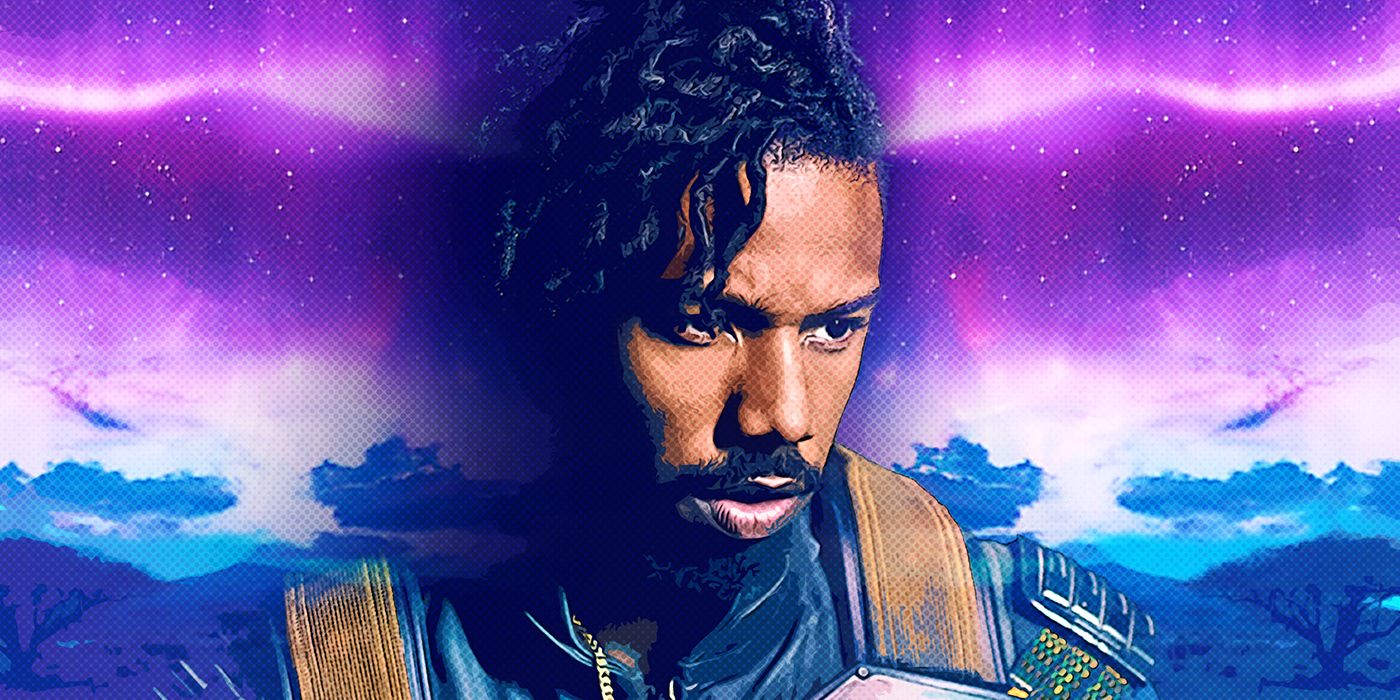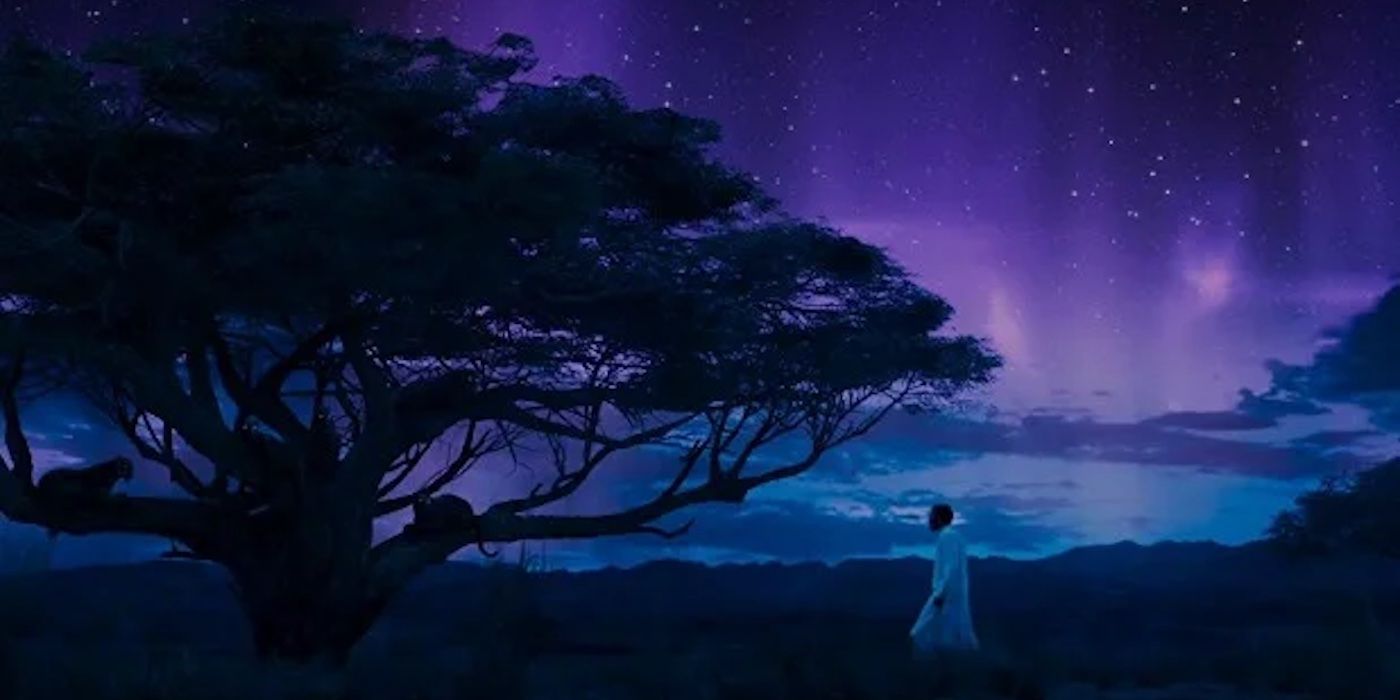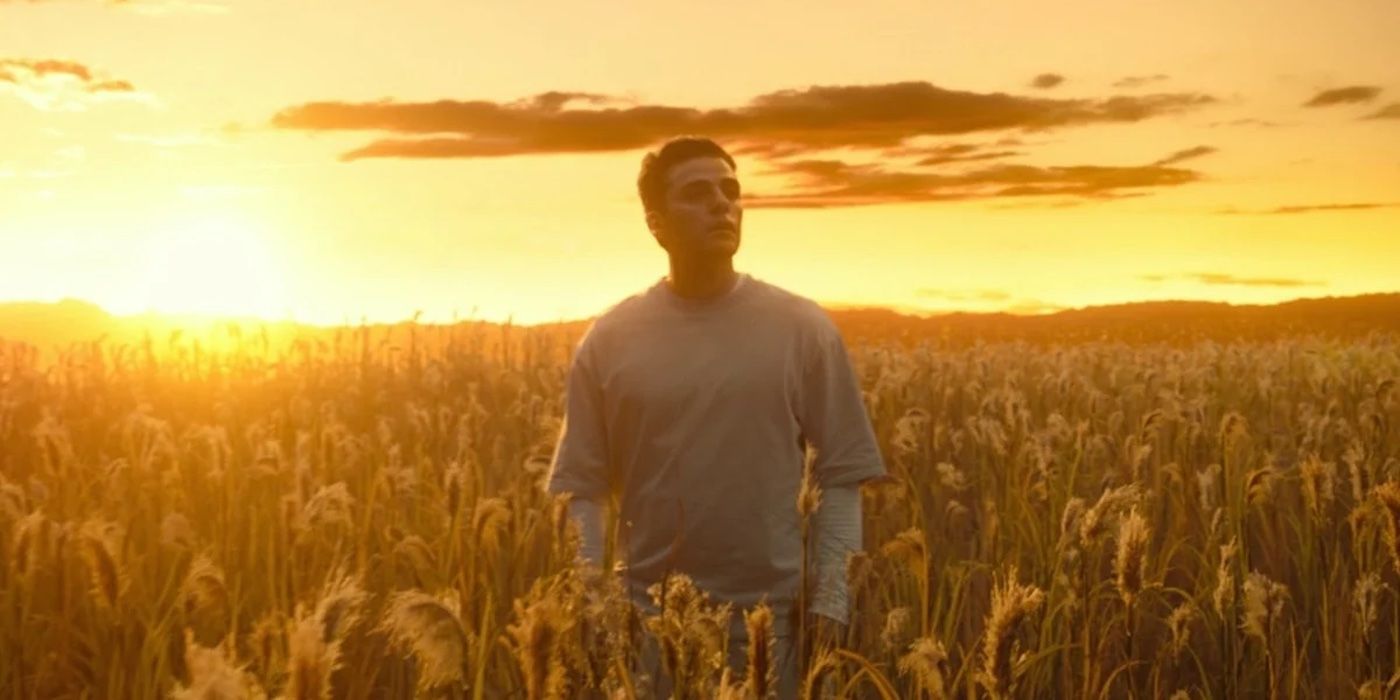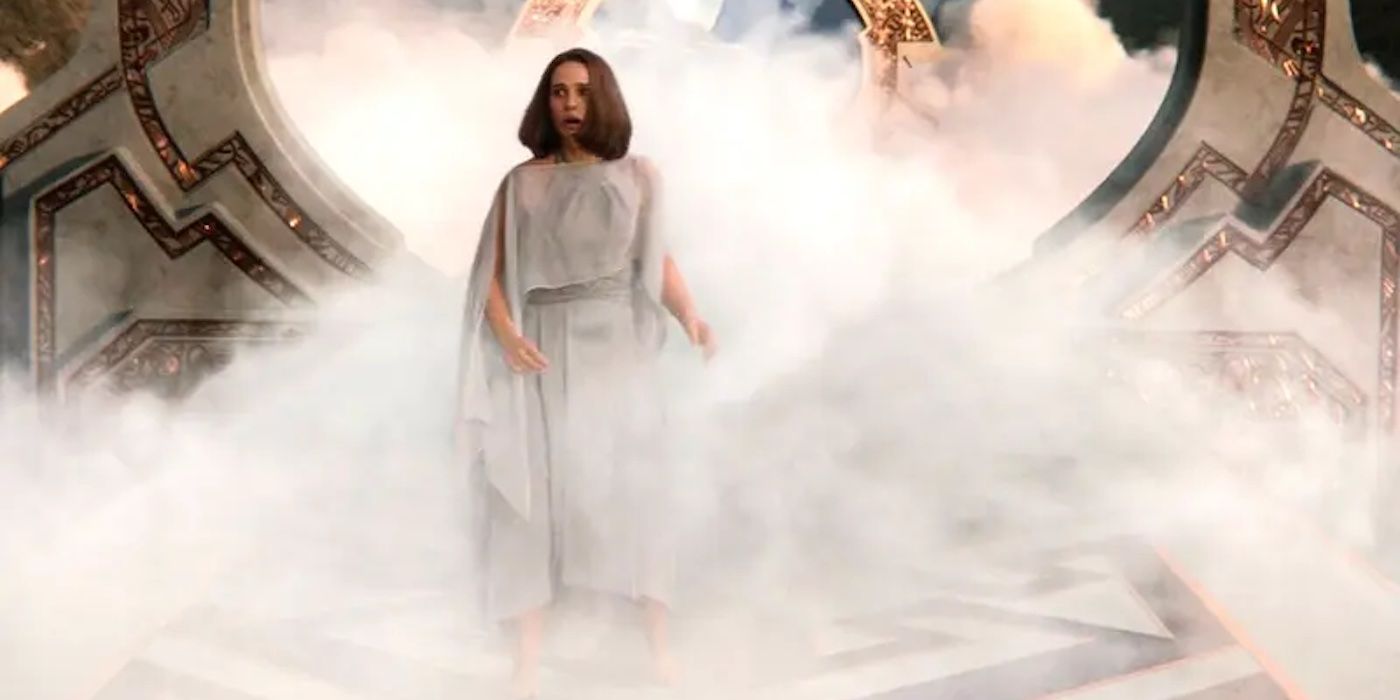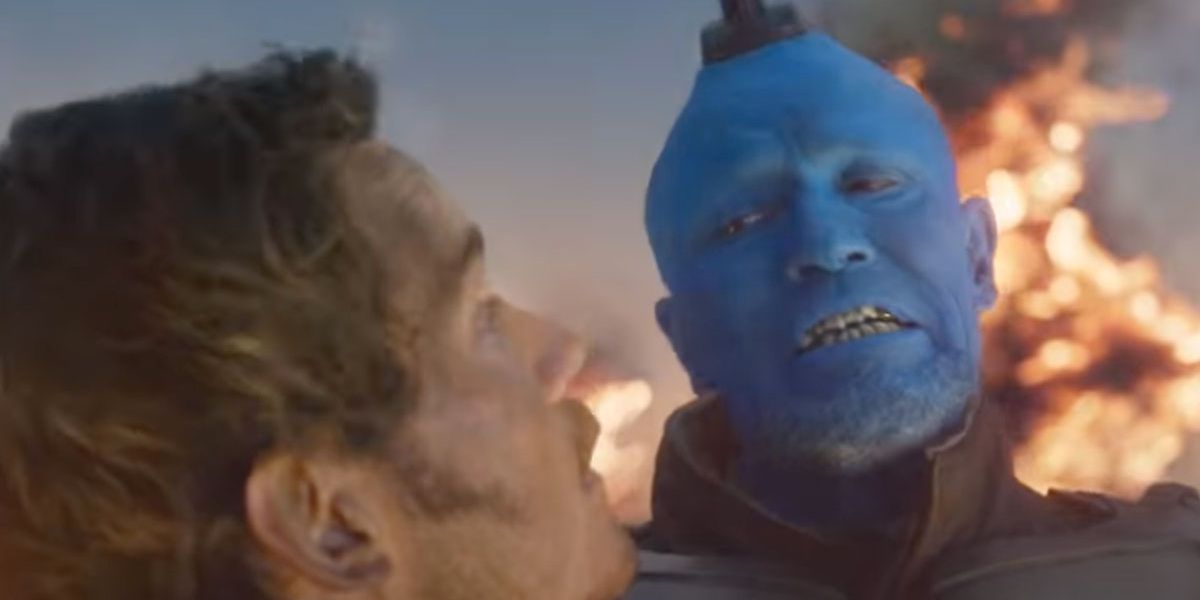Editor's Note: The Following Contains Spoilers for Black Panther: Wakanda ForeverEveryone knows that in comics, no one ever really dies. Ever since Superman died and returned in the 90s, the floodgates were open, and the MCU embraced it. Loki, Fury, Elektra, Bucky, Red Skull, and half of the universe have all died and come back. But lately, the MCU has been offering a different way to visit those who have passed on, which is to show them in the afterlife. It’s even been a major plot device in both Black Panther, its sequel, Black Panther: Wakanda Forever, Moon Knight, and Thor: Love and Thunder. And, while a lot of the time it can be used as a vehicle for just some fun cameos or introductions to more spiritual characters, that doesn’t mean that these cameos are just shallow fanservice.
The Ancestral Plane
The Ancestral Plane serves as the afterlife that Wakandans and followers of the Panther Goddess Bast, and is a literal dimension that people can visit. Through both Black Panther movies, we have seen three characters come back to life in a sense to speak to the character currently going through the ritual of taking the Heart-Shaped Herb and becoming Black Panther. T’Challa (Chadwick Boseman) visits his father, T’Chaka (John Kani), twice in the first movie. The first time is something like a passing of the torch moment, where T’Chaka gives his approval to his son ascending to the throne and speaks of how proud he is of him. The second time is when T’Challa calls out his father on his hypocritical worldview that led to him killing his own brother. Also, in the first movie, Erik Killmonger (Michael B. Jordan) sees his father, N’Jobu (Sterling K. Brown), which establishes how Killmonger still hasn’t recovered from the trauma caused by his father dying at the hands of his uncle.
In Wakanda Forever, Shuri (Letitia Wright) goes to the Ancestral Plane where she is confronted by Killmonger, who eggs her on about her motivations for fighting Namor (Tenoch Huerta Mejía). He forces her to confront if she’s doing this because it’s the right thing to do or if she’s doing it out of vengeance and anger. Besides being a great surprise cameo from Michael B. Jordan, this scene also serves as the emotional turning point for Shuri, just as the Ancestral Plane scenes were the same for T’Challa and Killmonger.
For Shuri, this is the first time someone is directly confronting her about her internalized rage from her brother's death, and how she is constantly searching for someone or something to blame for a situation that was out of everyone’s control. Killmonger can even be read in this scene as being purposefully antagonistic to intentionally show Shuri that becoming like him only leads to unnecessary death and destruction. It could also be read as him legitimately tempting her to join the side of evil. Alternatively, none of this is literal and it's just a manifestation of Shuri’s inner turmoil.
The Duat and Reality
Earlier this year in the MCU, the system known as Moon Knight (Oscar Isaac) find themselves in The Duat, the Egyptian afterlife. There they meet Taweret (Antonia Salib), The Egyptian God of Women and Children. Throughout these episodes in The Duat, Steven and Marc (two of the personalities of the Moon Knight system) confront parts of their past in this realm that shifts around according to the individual's mind. While Taweret does confirm that multiple afterlives exist in the MCU, it also becomes clear in these episodes that a lot of what is being experienced isn’t literal. This is backed up in Wakanda Forever when Shuri describes these types of things as the brain going through what it needs to in order to grieve.
This is very important to how the MCU uses the afterlife going forward because these specific rules set the limitations and expectations of how cameos in the afterlife can be made. For Moon Knight, the Duat served as a place where he can learn to co-exist and accept the personalities he has. For T’Challa and Shuri, it was a place where they were able to more firmly take a stance as the type of person they want to be. But, with these realms not being 100% literal, the cameos that come along with these locations must have some kind of significance to the story or character visiting the afterlife.
The Soul Stone and Valhalla
The two other afterlife dimensions that have been shown in the MCU are the Soul Stone realm, which is visited after obtaining the stone, and Valhalla. In this Soul Realm, Thanos (Josh Brolin) is visited by a young version of his daughter Gamora (Ariana Greenblatt) whom he sacrificed to obtain the stone. In Valhalla, Jane Foster (Natalie Portman) is welcomed into this afterlife for Gods by Heimdall (Idris Elba). While, at first, both of these can come off as an excuse to see a beloved character one more time, both of these also have significance to the story.
For Thanos, it is to confront and address the guilt he felt for sacrificing his daughter and to show it ultimately doesn't matter to him very much because he feels like he did it for the greater good. He doesn’t even show much regret for his actions. Valhalla is the afterlife in the MCU that feels the most “literal” and Heimdall specifically welcoming Jane into Valhalla is the culmination of her arc. Accepting her death to help others ascended her to be worthy of being a God, even if she wasn’t born into it like Thor (Chris Hemsworth). Even though both of these scenes offer much less dramatic weight than the afterlife scenes in Black Panther and Moon Knight, the scenes still manage to not just feel like a shoehorned-in cameo.
Moving Forward
Death in a lot of genre media is pretty loaded. A surprising death will keep everyone on the edge of their seat, which is one of the many reasons shows like Game of Thrones and The Walking Dead became as popular as they did. But when it happens in abundance, the surprise loses its luster. And worse, when characters are so beloved that they come back, it can make their death scenes feel shallow and risks the franchise jumping the shark. But in the world of comics, it’s also sometimes necessary to bring people back. For example, Loki (Tom Hiddleston) is a character defined by trickery and cheating death, so it would almost feel weird if he didn’t cheat death at every possible opportunity. Meanwhile, if Guardians of the Galaxy Vol. 3 opens with Yondu (Michael Rooker) walking into a room to tell Star-Lord (Chris Pratt) to have a Merry Christmas, it would be awful. It’s a delicate balance that has to be found, and it will work or not on a case-by-case basis.
The cameos that the afterlife can bring will always be a great opportunity for fanservice, but what has made it impactful so far is that the only times it has been used, it was for a greater purpose. Fanservice can be fun up until it comes across as pandering. The cameos should serve the story and the MCU going forward should remember to keep this card in the back of their hand. Because to have moments where characters still deal with the stakes of others dying, but have the opportunity to visit them for closure, is always more emotionally rewarding than just bringing everyone back to life completely. It can be a brilliant case of having your cake and eating it too. You get great cameos and new storytelling opportunities while also having actual stakes in the plot without jumping any sharks.

